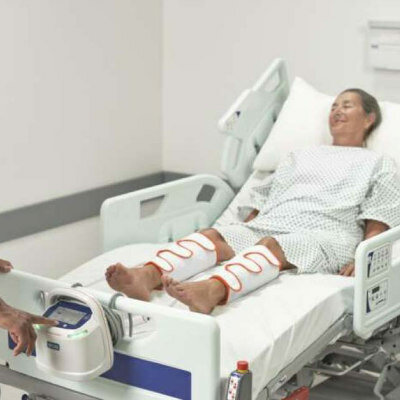Prenatal Spina Bifida Surgery Improves Functional Outcomes
|
By HospiMedica International staff writers Posted on 03 Feb 2020 |

Image: Prenatal spina bifida surgery improves school age function (Photo courtesy of CHOP)
Fetal surgery to repair myelomeningocele, the most severe form of spina bifida, significantly improves school-age functional outcomes, according to a new study.
Researchers at the Children's Hospital of Philadelphia (CHOP, PA, USA), the University of Pittsburgh (Pitt; PA, USA), the University of California, San Francisco (UCSF, USA), and other institutions conducted a study involving 161 children in order to compare the adaptive behavior and other outcomes at school age (5.9–10.3 years) between children who underwent prenatal corrective surgery (79 children) and those who had conventional surgery after they were born (82 children). Follow-up assessments included neuropsychological and physical evaluations.
The results revealed that children who had surgery before birth had a 93% chance of walking unaided by school age, compared to 80% in the traditional surgery group. The percentage of children in the prenatal and postnatal groups who needed further surgery to place a shunt in the brain to relieve hydrocephalus was 49% and 85%, respectively. Children in the prenatal were almost six times more likely to be able to visit the bathroom on their own compared to the postnatal group, and also showed a far better degree of bladder and bowel control. In addition, quality of life was superior for both the children and their families, and overall stress levels were reduced. The study was published in the January 2020 issue of Pediatrics.
“These findings add to the growing body of literature demonstrating the benefits of prenatal surgery for spina bifida. Providers should take these findings into account when counseling expectant mothers to ensure that families considering prenatal surgery for their fetus understand the potential risks and benefits,” said study co-author N. Scott Adzick, MD, of CHOP. “Fetal surgery is a complex and serious procedure and should only be done by experienced teams. Research needs to continue to refine the technique in a way that will improve outcomes even further.”
Spina bifida is a birth defect that occurs due to failure of the spinal column to form completely around the spinal cord, leaving part of it exposed. The most severe form is meningomyelocele, when the spinal cord and the meninges (the tissue that covers the spinal cord) protrude through the spinal column. If the protrusion is large enough, it can block the flow of the cerebrospinal fluid (CSF). If severe enough, it can draw the lowest part of the brain into the opening at the base of the skull, a condition called hindbrain herniation.
Related Links:
Children's Hospital of Philadelphia
University of Pittsburgh
University of California, San Francisco
Researchers at the Children's Hospital of Philadelphia (CHOP, PA, USA), the University of Pittsburgh (Pitt; PA, USA), the University of California, San Francisco (UCSF, USA), and other institutions conducted a study involving 161 children in order to compare the adaptive behavior and other outcomes at school age (5.9–10.3 years) between children who underwent prenatal corrective surgery (79 children) and those who had conventional surgery after they were born (82 children). Follow-up assessments included neuropsychological and physical evaluations.
The results revealed that children who had surgery before birth had a 93% chance of walking unaided by school age, compared to 80% in the traditional surgery group. The percentage of children in the prenatal and postnatal groups who needed further surgery to place a shunt in the brain to relieve hydrocephalus was 49% and 85%, respectively. Children in the prenatal were almost six times more likely to be able to visit the bathroom on their own compared to the postnatal group, and also showed a far better degree of bladder and bowel control. In addition, quality of life was superior for both the children and their families, and overall stress levels were reduced. The study was published in the January 2020 issue of Pediatrics.
“These findings add to the growing body of literature demonstrating the benefits of prenatal surgery for spina bifida. Providers should take these findings into account when counseling expectant mothers to ensure that families considering prenatal surgery for their fetus understand the potential risks and benefits,” said study co-author N. Scott Adzick, MD, of CHOP. “Fetal surgery is a complex and serious procedure and should only be done by experienced teams. Research needs to continue to refine the technique in a way that will improve outcomes even further.”
Spina bifida is a birth defect that occurs due to failure of the spinal column to form completely around the spinal cord, leaving part of it exposed. The most severe form is meningomyelocele, when the spinal cord and the meninges (the tissue that covers the spinal cord) protrude through the spinal column. If the protrusion is large enough, it can block the flow of the cerebrospinal fluid (CSF). If severe enough, it can draw the lowest part of the brain into the opening at the base of the skull, a condition called hindbrain herniation.
Related Links:
Children's Hospital of Philadelphia
University of Pittsburgh
University of California, San Francisco
Latest Surgical Techniques News
- Minimally Invasive Endoscopic Surgery Improves Severe Stroke Outcomes
- Novel Glue Prevents Complications After Breast Cancer Surgery
- Breakthrough Brain Implant Enables Safer and More Precise Drug Delivery
- Bioadhesive Sponge Stops Uncontrolled Internal Bleeding During Surgery
- Revolutionary Nano Bone Material to Accelerate Surgery and Healing
- Superior Orthopedic Implants Combat Infections and Quicken Healing After Surgery
- Laser-Based Technique Eliminates Pancreatic Tumors While Protecting Healthy Tissue
- Surgical Treatment of Severe Carotid Artery Stenosis Benefits Blood-Brain Barrier
- Revolutionary Reusable Duodenoscope Introduces 68-Minute Sterilization
- World's First Transcatheter Smart Implant Monitors and Treats Congestion in Heart Failure
- Hybrid Endoscope Marks Breakthrough in Surgical Visualization
- Robot-Assisted Bronchoscope Diagnoses Tiniest and Hardest to Reach Lung Tumors
- Diamond-Titanium Device Paves Way for Smart Implants that Warn of Disease Progression
- 3D Printable Bio-Active Glass Could Serve as Bone Replacement Material
- Spider-Inspired Magnetic Soft Robots to Perform Minimally Invasive GI Tract Procedures
- Micro Imaging Device Paired with Endoscope Spots Cancers at Earlier Stage
Channels
Critical Care
view channel
Light-Based Technology to Measure Brain Blood Flow Could Diagnose Stroke and TBI
Monitoring blood flow in the brain is crucial for diagnosing and treating neurological conditions such as stroke, traumatic brain injury (TBI), and vascular dementia. However, current imaging methods like... Read more
AI Heart Attack Risk Assessment Tool Outperforms Existing Methods
For decades, doctors have relied on standardized scoring systems to assess patients with the most common type of heart attack—non-ST-elevation acute coronary syndrome (NSTE-ACS). The GRACE score, used... Read morePatient Care
view channel
Revolutionary Automatic IV-Line Flushing Device to Enhance Infusion Care
More than 80% of in-hospital patients receive intravenous (IV) therapy. Every dose of IV medicine delivered in a small volume (<250 mL) infusion bag should be followed by subsequent flushing to ensure... Read more
VR Training Tool Combats Contamination of Portable Medical Equipment
Healthcare-associated infections (HAIs) impact one in every 31 patients, cause nearly 100,000 deaths each year, and cost USD 28.4 billion in direct medical expenses. Notably, up to 75% of these infections... Read more
Portable Biosensor Platform to Reduce Hospital-Acquired Infections
Approximately 4 million patients in the European Union acquire healthcare-associated infections (HAIs) or nosocomial infections each year, with around 37,000 deaths directly resulting from these infections,... Read moreFirst-Of-Its-Kind Portable Germicidal Light Technology Disinfects High-Touch Clinical Surfaces in Seconds
Reducing healthcare-acquired infections (HAIs) remains a pressing issue within global healthcare systems. In the United States alone, 1.7 million patients contract HAIs annually, leading to approximately... Read moreHealth IT
view channel
Printable Molecule-Selective Nanoparticles Enable Mass Production of Wearable Biosensors
The future of medicine is likely to focus on the personalization of healthcare—understanding exactly what an individual requires and delivering the appropriate combination of nutrients, metabolites, and... Read moreBusiness
view channel
Philips and Masimo Partner to Advance Patient Monitoring Measurement Technologies
Royal Philips (Amsterdam, Netherlands) and Masimo (Irvine, California, USA) have renewed their multi-year strategic collaboration, combining Philips’ expertise in patient monitoring with Masimo’s noninvasive... Read more
B. Braun Acquires Digital Microsurgery Company True Digital Surgery
The high-end microsurgery market in neurosurgery, spine, and ENT is undergoing a significant transformation. Traditional analog microscopes are giving way to digital exoscopes, which provide improved visualization,... Read more
CMEF 2025 to Promote Holistic and High-Quality Development of Medical and Health Industry
The 92nd China International Medical Equipment Fair (CMEF 2025) Autumn Exhibition is scheduled to be held from September 26 to 29 at the China Import and Export Fair Complex (Canton Fair Complex) in Guangzhou.... Read more














